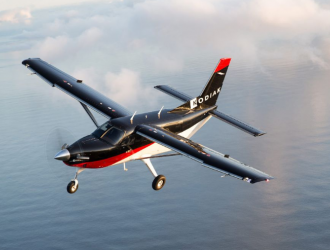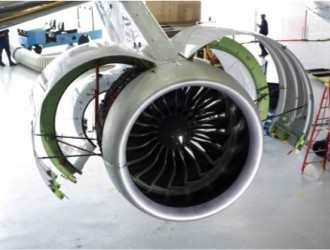
The carrier wants to configure the aircraft in a two-class, business and economy layout as opposed to a three-class arrangement including premium economy, a seating class that has proved unpopular in the Malaysian market. It plans to use the 10 growth aircraft for route upgrades to Indian cities such as Mumbai, Delhi, Chennai and Bangalore, all on which the airline downsized equipment from the 777-200ER to the 737-800 following its disposal of the Boeing widebodies. Bellew said the 10 aircraft will also allow for the option of resuming some canceled European routes.
“Market conditions have to be right before we start flying to Europe again; I do not see this happening before the 2019-2021 time frame,” Bellew noted.
London, which remains the only European destination on MAB’s network, gets twice-daily service with Airbus A380s. Malaysia plans to replac the superjumbos with Airbus A350-900s starting in April 2018. MAB has leased six A350-900s from Air Lease Corp., of the U.S. under a 12-year agreement.
The airline plans to reconfigure its six A380s to seat 700 and use them for flights to Mecca in Saudi Arabia for Muslim pilgrims and possibly lease them out for charters. The operation will involve another company established and owned by MAB. Bellew said he is now talking with Airbus about reconfiguring the aircraft, including the upper deck, to seat 700 passengers.
Bellow also said he hopes MAB’s plan to lease four more A330-300s to fill short-term capacity needs will materialize soon.
Malaysia plans to launch flights to seven destinations in China this year, starting with Nanjing, Fuzhou and Shenzhen in April followed by Wuhan in August and Chengdu and Chongqing in October. It expects to announce flights to Tianjin within the next few months. Plans for April also call for the introduction of a new route, namely Penang-Shanghai, and a doubling of service on the daily Kuala Lumpur-Shanghai service. MAB’s other China destinations now encompass Beijing, Guangzhou, Haikou and Xiamnen.
Bellew expressed confidence that MAB will return to profitability in 2018 despite stiff competition from compatriots Malindo Air and AirAsia on domestic and regional flights. For MAB, passenger loads have improved significantly after a pair of high-profile crashes in 2014 forced the airline into bankruptcy.
“Regaining market confidence is a boost and with flights recording 90 percent-plus [load factors] are indications of better times to come,” Bellew concluded.





